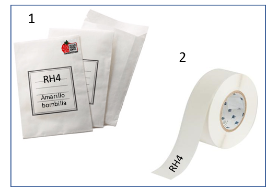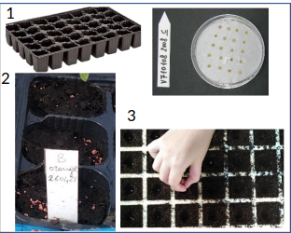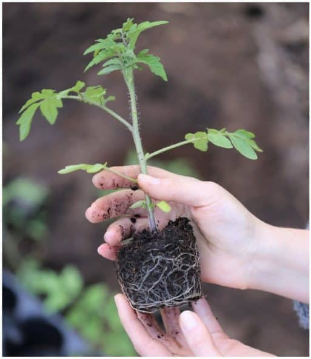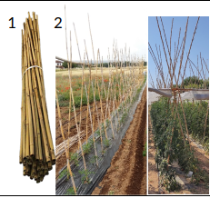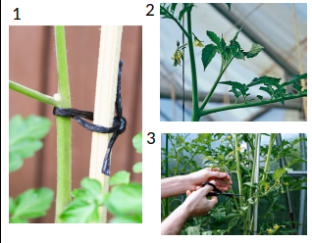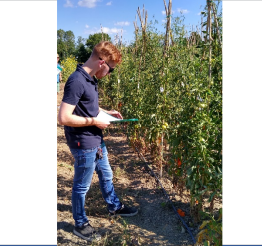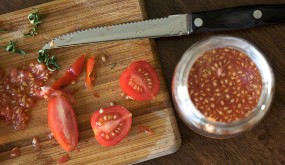Tutorials
Tutorials
Plant growing
Sow, transplant and grow your plants according to the instruction below or, if you have already experience, according to your standard practices. Grow, at best, four plants per variety, or less if you have not enough space. It is important that you accurately label each plant with the accession code.
|
Note |
Image |
|---|---|
|
Labelling: each seed envelop contains seeds of an individual variety indicated with a code and with a name (1); you must keep your plants labeled, from sowing to maturity, that means to sign at which variety they belong to. You can use the repository codes (eg., RH4) or the name (eg., Amarillo bombilla) as you prefer. You can also use the material you prefer; an easy, cheap, and efficient method is to write the code with a pencil on a piece of paper tape (2) and stick it to the pot or the tutor. |
|
|
Sowing: we suggest sowing each variety in a small container, that can be a professional seeder or another plastic or aluminum pot (1). Use one container per variety and label the container appropriately (2). In the nurse container, the plants should develop for 3/4 weeks in a protected, warm environment, before transplanting them in open air conditions. Use a general purpose soiltop. Make small holes with a pencil (about 1.5 cm), put the seed (3), cover, and gently press. Water and keep humid from now on; a small hole in the bottom of the container will drain the excess of water. Keep in warm conditions (15/25°C). |
|
|
Transplanting: once the plantlets are about 15 cm tall (4-5 true leaf emerged) (1) they are ready for transplanting. It will take about four weeks from sowing. Prepare the pots, the orchard, or the field for transplanting. The tomato plant can become quite big so if you use pots, they should have 20, better 25 cm of diameter. If you use long pots in the balcony, consider that plants should be spaced at least 30 cm each other. Make a hole of right dimension for the plantlet to be transferred (transfer the plantlet with soil whenever possible), press and water (2). |
|
|
Tutoring: tomato plants have generally indeterminate growth, that it means they show continuous growth and elongate a lot. Tomatoes for processing bear a mutation that keep the growth determinate and can be cultivated in open field without tutors. All the varieties included in the Citizen science experiment are indeterminate and need a tutor that support them during the growth. Canes (1) are useful tutors for tomato; consider that the plant will become heavy with growth and fruits so the tutors must be solid. In field or greenhouse, plants can be grown in parallel rows (2) so that tutors are connected to each other to make a solid structure. |
|
|
Tying and pruning: during growth, plants should be tied to the tutor at regular intervals by using suitable strings (1). Tomato plants produce vigorous lateral sprouts (2) that should be regularly eliminated otherwise the plant become too bushy (3). If you have pot and limited soil, maintain growing only a single shoot. If your plants have more space, you can grow your plants with two shoots, thus allowing higher production. |
|
|
Watering, fertilizing and defending: Plants should be watered (1), avoiding waterlogging. Pay attention to pour the water directly onto the soil avoiding wetting the plants. Frequency of watering and quantities to be applied depend on the size of the plant and temperatures. Soil at a depth of 5 cm should be wet. For fertilization (2) you can use either manure or other natural fertilizer or commercially available compound fertilizers at the doses recommended. In case of pests or diseases you may ask for advice to your local gardening center. |
|
|
Data scoring: during the growth of your plant, take scores as detailed below, using the scoring form that you received with the seed (or download it here, link). You will start with Flowering time, then see the Green shoulder and so on, until you have your mature fruits … it will be time to weight them, taking a picture and finally to taste them! |
|
|
Seed extraction: we do not ask you to send seed back, but you can extract seed from your tomatoes to sow the next year or to exchange with other Farmers or Citizens. There are several tutorials online for doing that. |
|
Plant phenotyping and reporting
Keep the data of your cultivation on the Report data form that you have received with the seeds (or download it here, link to download). Fill the form with your data collected during cultivation according to the instruction below. For each accession, take a photo of a representative ripe fruit, on vine or detached, as you prefer. Label or name the photo accurately with the accession code (you may take a photo of the label and immediately after that of the relative fruit, so label and fruit have consecutive photo numbers). At the end of your Citizen experiment, please submit your report (Report data form + 5 or more photos) in one of the following ways:
- record your data and send by email a photo of the paper form
- record your data, copy them into the Word form and send it by email
- record your data and upload them into the Google form (the link will be published soon)
Email always to your National information point writing in Spanish /Catalan ( harnesstom @ fundaciomiquelagusti.cat ), in Italian ( harnesstom @ unitus.it ) or in Bulgarian ( harnesstom.bg @ abv.bg ). All info points also respond in English.
You are welcome to post your Citizen scientist activities on social media, such as Instagram, Twitter, or others, with images of your trials and your plants, opinions, etc... (Make a mention of the Harnesstom project).
The data you will provide us will be very useful in understanding which varieties are the most interesting. Together we will study the panel of 26 varieties in many places! As recognized participant, once reported your data you will be awarded of the “Certificate of Harnesstom Citizen Scientist”, will be informed about the outcome of the experiment and about other initiatives issued within the project.
As a Citizen Scientist you will need to train yourself in the use of the measurement scales of the different plant traits that we need to characterize. Below you will find a short explanation on how to “capture” these traits in your plants.
Before starting…
- All the varieties should be sown and transplanted at the same moment!
- You have received the seed from 5 varieties. Maybe some plants or some varieties did not grow well in your “farm”. Do not worry, you can upload just the data for the varieties/plants that grew properly.
- Some traits should be measured in a “per plant basis”. This means that you should report scores for each plant! (If possible)
- Some traits should be recorded at a “variety-level”. This means that you should look at all the plants of the variety and “bet” which is the most common score of the variety. You can do it!
- Do not worry if you report partial results because you missed to score one trait or you did not have the ability for doing it. Even the most trained scientists make mistakes sometimes!
First report your plant production system …..
- Cultivation environment: where do you cultivate the plants?
- Urban orchard (in the soil)
- Balcony (in the city)
- Orchard (semi-professional or hobbistic)
- Professional orchard
- Other:_____
- Irrigation system: how did you irrigate the plants?
- I relied on rainfall
- By hand!
- Drip tape
- Furrow irrigation
- Other:________
- Sowing date: write down the sowing date.
- Transplanting date: write down the date of transplanting of the plants.
Traits to be measured:
Flowering date:
For each plant, write the date on which the first open flower appears on the plant. A flower is open when petals are flattened (at 90° with the staminal cone). In the photo, the appearance of tomato open flowers. The moment you see the first yellow petals, it's time to write down the "flowering date".
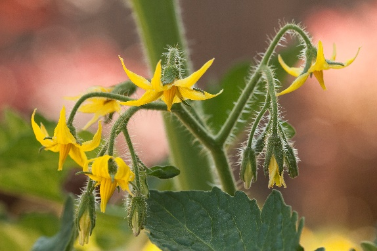
Green shoulder intensity:
Some varieties develop an intense green area in the upper part of the fruit, some others not. The “green shoulder” in the upper part of the fruit can be absent (all the fruit has the same “green” color) or present (the upper part of the fruit has the green color of a higher intensity). If the “green shoulder” is present, then it can be “light green”, “intermediate green”, or “dark green”. Looking at the classification table below, tell us which category each variety belongs to. You must look at immature fruits. Give a single score for each.

The cultivated tomato has a great diversity of colors, which can be “yellow”, “orange”, “pink”, “red”, and “brown”. Once you have ripe fruits, look at the classification table below, and tell us to which category each variety belongs (give a single score for each variety). This is also the time to take photos of fruits on the plant!

Number of fruits (first three inflorescences):
This is the most laborious character to measure, because you must count all the fruits that each plant produces at the first three inflorescences (from the bottom of the plant). A difficult trait, so if you don’t have the plants nearby, you can “skip” it. If you can, count for each plant all fruits that have set (it means that have developed or started developing) on the first three inflorescences). This will give a measure of the “productivity” of your plants!
Fruit weight:
For each plant, weight one fruit (or better more) using a balance and report the “fruit weight(s)”. As more fruits per plant you weight, more accurate is the characterization, as some plants produce fruits of different sizes.
Number of locules:
Cut transversally the detached fruits and take a look. How many cavities can you count? The locules are the internal cavities of the tomato fruit. We can find fruits of 2 or more locules. When we observe 7 or more locules, we do not count all of them and name it “multilocular”.
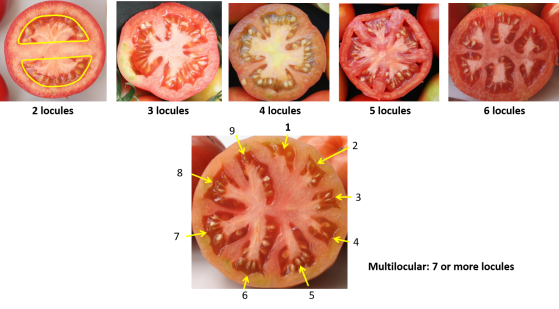
Skin color:
Depending on the variety, the skin can be yellow or transparent (colourless). Take a piece of skin, clean it with water (or scratch it with the nail) eliminating the flesh and observe the color using a white background. The “colourless” or “yellow” epidermis is responsible for some fruit colors in tomatoes.

Fruit shape:
The cultivated tomato has a great diversity of shapes, which can be “Very flat”, “Slightly flat”, “round”, “oxheart”, “heart”, “ellipsoid”, “rectangular”, “obovoid or pear-shaped”, “bell pepper”, or “long pepper”. Once you have ripe fruits, look at the classification table below, and tell us to which category each variety belongs. Give a single score for each variety!
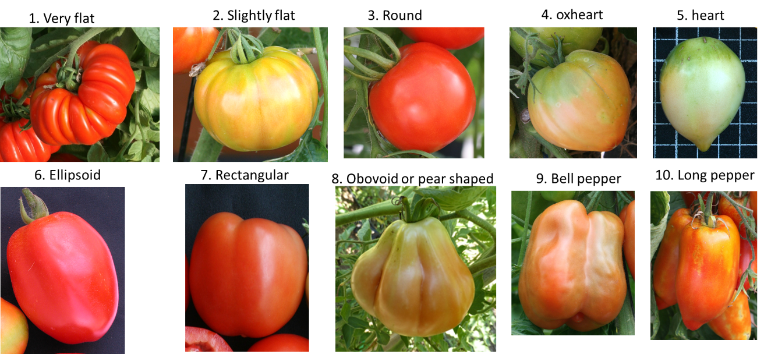
Which have been your preferred varieties? At the end of the crop, tell us which varieties yielded better and had the best taste, according to your point of view.
Production:
According to your experience cultivating these varieties, can you rate the different varieties depending on whether they have adapted well to your growing system and have produced enough fruits? Use the following scale:
- very poor (1)
- poor (3)
- neither good nor bad (5)
- intermediate production (7)
- very productive (10)
Appearance (rating):
Considering solely the external appearance of the fruits (fruit shape, color), can you rate the different varieties according to your preference? Use the following scale:
- Very ugly tomato (1)
- I do not like it (3)
- Neither good nor bad (5)
- I like it (7)
- I like it very much (10)
Appearance (description):
In the following list, we propose different attributes to help you describe the appearance of the different tomatoes. For each variety, select as many attributes as you find in the variety.
- Beautiful color; I like its appearance
- Too large/big; I like the fleshy aspect
- I dislike its appearance; Hollow fruit
- Too small; Too much jelly and seed
- None of these items for this tomato
Taste (rating):
Have you tasted each variety? Which was the most flavorful? Can you rate the varieties depending on whether you liked the taste?
- Very bad tasting tomato (1)
- I do not like it (3)
- Neither good nor bad (5)
- I like its taste (7)
- I like its taste very much (10)
Taste (description):
In the following list, we propose different attributes to help you describe the taste of the different tomatoes. For each variety, select as many attributes as you find in the variety.
- Sweet tomato; Too much acid
- Not enough sweet; Bland/no taste
- Not pleasant after taste; Aromatic tomato/strong aroma
- None of these items for this tomato
Notes: if you want to tell us something, this is the space!
(open question)
|
|
|
|

